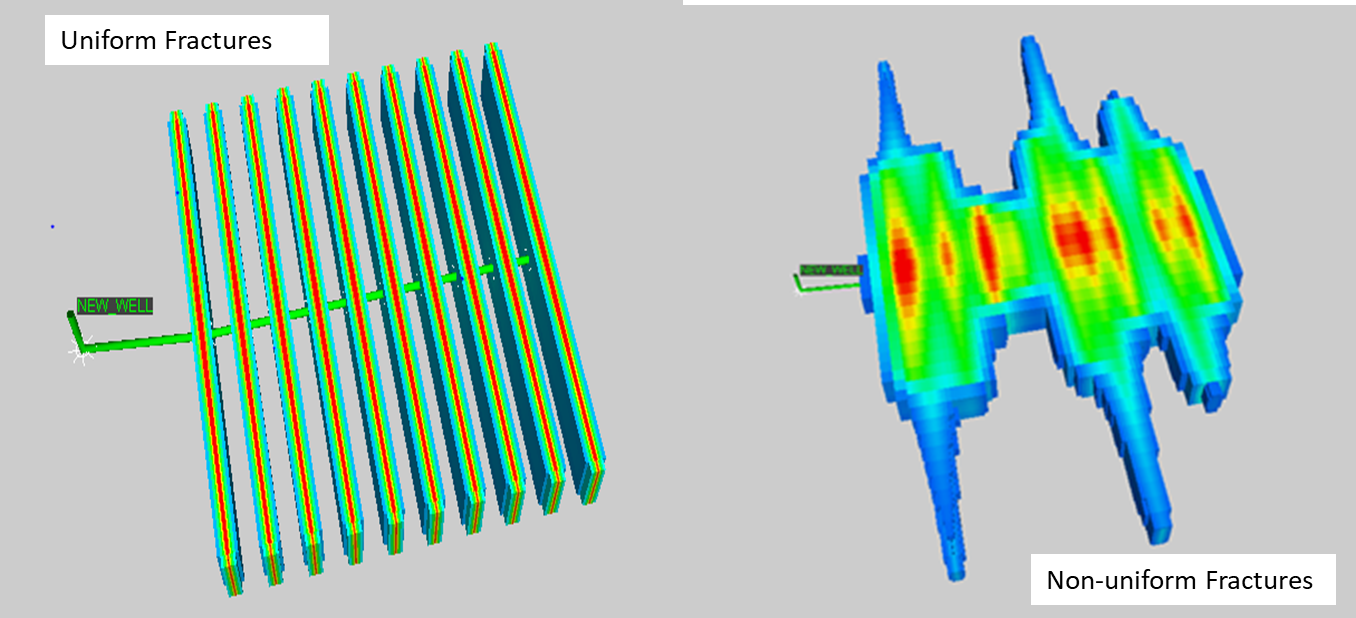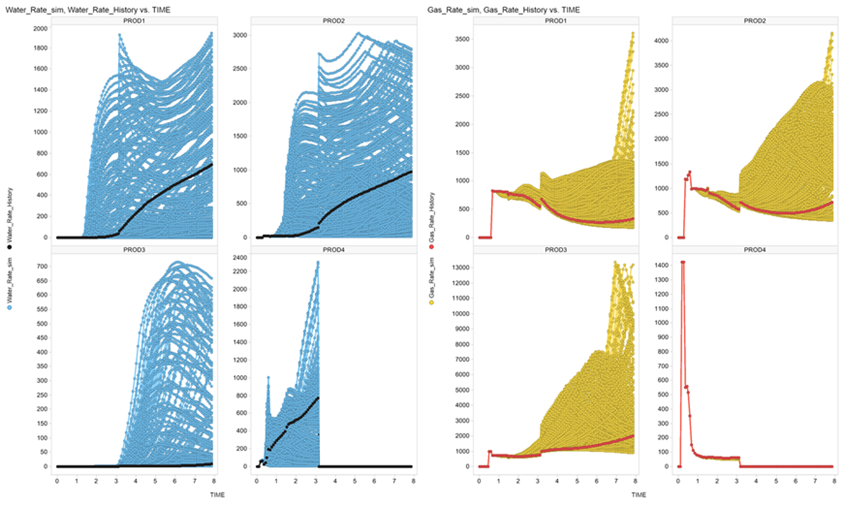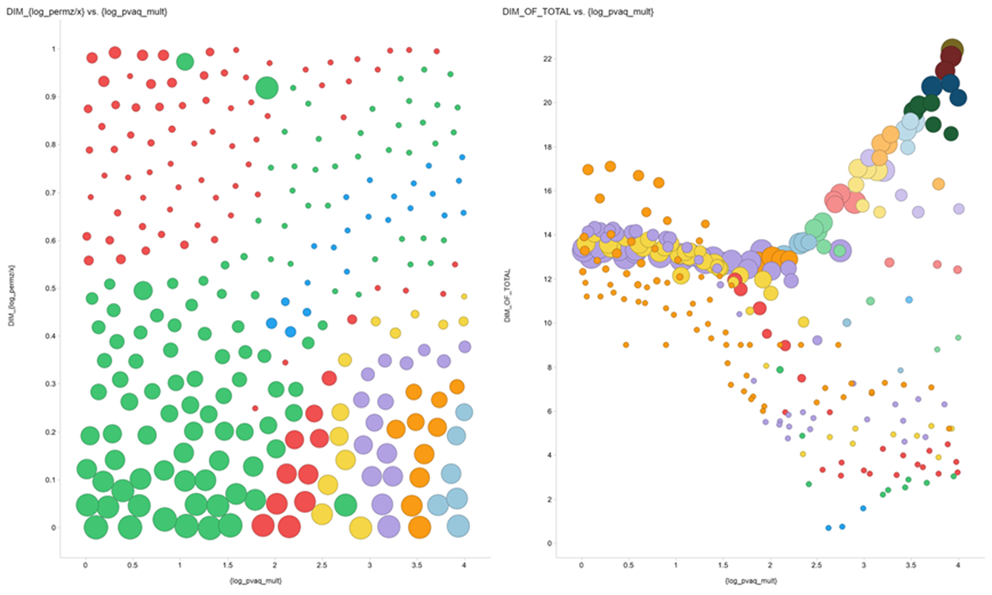Reservoir Simulation
Oil and gas recovery from unconventional reservoirs is a significant contribution to worldwide production. Unconventional reservoirs are characterized as having low to ultra-low permeabilities. That means that flow in a reservoir can be extremely slow. These reservoirs can only be economically produced if fractures are created, which provides a large area for the reservoir to fracture flow and the fractures provide an efficient conduit for flow into the well. Modeling of this process often takes the form of explicit simulation of the reservoir/fracture/well system. The graphic on the left in the following figure provides an idealized representation pressure depletion of a fractured system. The assumptions in this model are of uniform, equally spaced fractures. Dr. Gorell and his research group are performing reservoir simulation and modeling research into the effects of fracture and reservoir uncertainy on estimates of unconventional reservoirs. This involves a combination of research into gridding methods, uncertainty analysis and machine learning incorporated into modeling. For example, another representation of the flow behavior from a reservoir with nominally the same average reservoir and fracture properties is shown on the right side of the following figure. This clearly shows the impact on near uncertainty in reservoir and decision variables on drainage patterns and its related recovery.

Given the many possible combinations of parameters used to characterize a reservoir/fracture/wellbore system results in many possible permutations of possible outcomes. This results in challenges associated with the visualization and analysis of the answers. Process automation methods and traditional large data methods are being developed used create, simulate and analyze results, for history matching, uncertainty analysis, and multi-parameter optimization, as shown in the following figures. In addition, machine learning methods are being developed for application to these same problems.
 |
 |
Bob L. Herd Department of Petroleum Engineering
-
Address
Bob L. Herd Department of Petroleum Engineering | Box 43111 | Lubbock, TX 79409-3111 -
Phone
806.742.3573 -
Email
pe@ttu.edu
